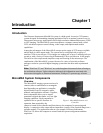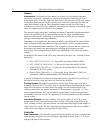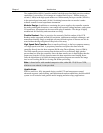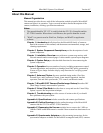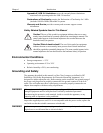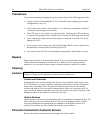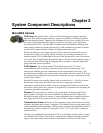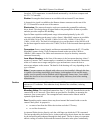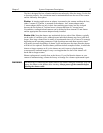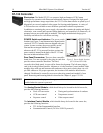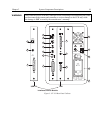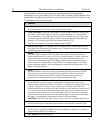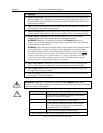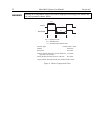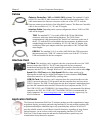
Chapter 2 System Component Descriptions 17
The fan is designed for low-vibration and does not adversely affect the image. For the fan
to function properly, free circulation must be maintained between the rear of the camera
and the laboratory atmosphere.
Shutter: In imaging applications an adapter is m
ounted to the camera and then the lens,
either C-mount or F-mount, is mounted to the adapter. An F-mount adapter and a
C-mount adapter differ not only in their lens-mounting provisions, but also in depth
because the focal plane of F-mount lenses is deeper than that of C-mount lenses.
Nevertheless, rectangular head cameras can be ordered with an internal 25 mm shutter
and the appropriate lens mount adapter already installed.
Shutter Life: Note that shutters are m
echanical devices with a finite lifetime, typically
on the order of a million cycles, although some individual shutters may last a good deal
longer. How long a shutter lasts in terms of experimental time will, of course, be strongly
dependent on the operating parameters. High repetition rates and short exposure times
will rapidly increase the number of shutter cycles and decrease the time when the shutter
will have to be replaced. Possible shutter problems include complete failure, in which the
shutter no longer operates at all, or the shutter may stick open or closed causing
overexposed or smeared images. It may even happen that one leaf of the shutter will
break and no longer actuate.
Shutter replacement is usually done at the factory. If you find that the shutter on your
cam
era is malfunctioning, contact the factory to arrange for a shutter-replacement repair.
WARNING
Disconnecting or connecting the shutter cable to the camera while the controller is on can
destroy the shutter or the shutter drive circuitry. Always power off the controller before
adjusting the shutter cable.



